 |
||
|
||
| ||
Part I: Hard discs and controllersThis month the market of storage devices is again still, unlike that of CD-RWs, where every month new technologies are announced. Here, we can see a slow increase in a record density, small steps in noise elimination and are still awaiting hard discs to be used in the home equipment. In the rating of hard discs only one thing has changed - a new model from IBM has entered the game. Other leaders are the same. Discs from 10 to 20 GBytes 5400 rpmHere we have entry-level discs. Although performance is very high, you save a lot of money. The prices within this class differ slightly. The Seagate U5 is a leader. The Fujitsu MPF 3xxxAT is a leader in the economic class. I would recommend you to go with the Fujitsu. Discs from 10 to 20 GBytes 7200 rpmThese discs are for those who don't need to store huge volumes of data. In my opinion, a price-to-performance ratio (effectiveness) is a determining factor. It is difficult to mark out a leader, that is why I give you only my humble opinion. The leader is the Quantum Fireball Plus AS. In the economic class the leader is the Seagate Barracuda ATA II. Discs from 20 GBytes 5400 rpmThese discs are designed only data storage. It makes no sense to talk about high efficiency. The Seagate U5 is a leader. In the economic class the leader is the Western Digital WD450AA. Discs from 20 GBytes 7200 rpmA high linear read speed (it should be as even as possible along the whole disc), a low access time. To cut a long story short, the performance matters most of all. The leader is the IBM 60GXP. Perhaps, IBM was the last to release a disc with 20 GBytes record density per platter. The disc turned out to be quick. As for its reliability - it is difficult to say. In the economic class the leader is the IBM DTLA. On the whole, the discs' characteristics are now much closer to each other. It means that you can buy a disc from any manufacturer - it will provide the required operating speed. Part II: Optical recording devices (CD-RW) |
|
Tweet | ||
Today's market of CD-RW drives is much like the one of processors a year ago. The situation has tensed up, and it is difficult to define an unquestioning leader. Although there is a great deal of companies in the field of optical media, which currently participate in the drive speed race, the major competitors are the companies leading in pickup production for CD-RW media: Oak Technology, Sanyo and Ricoh. The month's major tendency is a large-scale promotion of the buffer underrun error prevention technology "JustLink" by Ricoh. Ricoh has taken a steady leading position as an OEM-manufacturer. April was rich in announcements and appearances of devices based on the Ricoh's pickup. Besides, the company has launched a new 20x recorder, which makes us be more serious about their plans and roadmaps. As for other events, I should note that models with 4/4/32 speeds are gradually leaving the market. 8x is in fact the least speed for modern CD-RW drives.
Below is our TOP of the recommended CD-RW drives, which has changed according to the events occurred during this month.
This category means high quality and reliability, and, of course, a high price of a recorder.
Today this recorder has not the widest possibilities. There are analog devices from TEAC, TDK, HP and some other companies. Nevertheless, the Plextor drive is one of the leaders in its price niche. Apart from a true 16X record speed and the Burn-Proof technology, a new technology is now supported - "Powerec" (Plextor Optimized Writing Error Reduction Control). It determines a type of a CD-R used and choose an appropriate record speed for it.
It's worth noting that the PX-W1610A has an excellent speed and high quality of sound track extraction. On a well-balanced disc the speed can be as high as 30x! And at such a high read speed the recorder works very quiet. Another thing to be noted here is that the recorder offers high record quality and supports reading/writing in the RAW-DAO mode.
The CD-RW drive CyClone is based on the îT Sanyo's pickup, that is why these devices cost much, like its major competitor PlexWriter PX-W1610A. But you should remember that TDK is currently following an aggressive policy of extension of its domain of influence. A release of a budget model VorteX with 12/10/32 speeds proves that the company is interested in entering the market of recorders of middle price level.
That is why if you have decided to purchase a CD-RW drive with high quality recording, stable reading, a pleasant design and capable to replace your favorite Mitsumi, which in the most cases works under the CloneCD program, then go with this high-speed recorder from TDK.
This category includes relatively high speed devices at an average price and with an optimal ratio of speeds (today it is 12/10/32).
The price of this recorder has dropped much during the last months, and the CD-W512EB is one of the cheapest devices based on the Sanyo's pickup. This device has shown very high results in our tests, similar to the competitor from Plextor. The BLER factor is just a bit higher than that of the PX-W1210TA, the speed results are very high, like those one of the TEAC. An access speed is even higher than that of the brand-name opponent. Its quite low price together will all advantages listed above make this recorder a good competitor on the recorder market.
This category implies a low price and clear realization of what you are purchasing.
This model is one of the bestsellers in its sector. Its popularity is accounted by the well thought-out TEAC's marketing campaign - a moderate price ($120-130), reliability and high quality of the products, both ÎEM and Retail packages.
So, if you really need an 8x speed at the moderate price, then take the CD-W58E.
This recorder is primarily interesting for those who like to make backup copies of discs. The CR-4805TE supports all possible read/write RAW formats: RAW-DAO, RAW-DAO Write Simulation, CD+G RAW-DAO, RAW-SAO, RAW-SAO Write Simulation.
Its record quality is excellent for its class. A high and correct read speed and 8x record speed, plus a low price ($115-120) makes this recorder a good purchase for a not very demanding user in respect of CD recording.
In the end of March/beginning of April a large Taiwanese company, AOpen, has released a CD-RW drive CRW1232Pro with UltraDMA66 interface.
Its basic characteristics are: E-IDE (ATAPI) interface with Ultra-DMA Mode 4 (66.6 Mbps) support, JustLink technology support, 2 MBytes record buffer, 12/10/32 speeds, less than 120 mc access time, a digital (SPDIF) audio-out.
Right after AOpen, Creative started production of their CD-RW Creative Blaster 12x10x32. The speeds are, correspondingly, 12/10/32, the Burn-Proof technology is supported. This solid model, though with a weak software set, is a bit late in the 16x drive epoch.
In the beginning of the month Iomega started shipping its new model Predator - an external CD-RW drive which is coming now with a FireWire interface. The speeds are 8/4/32, the BURN-Proof technology is supported. An advantage of the new device lies in a possibility of hot connection of other interfaces - USB 1.1, PC Card and USB 2.0 (optionally) via special adapters. The Iomega Predator FireWire is already shipping at the retail price equal to $329.95. A set of interface adapters costs $79.95.
A Japanese company, Logitec, is getting more and more active. In the beginning of April the company announced the CD-R/W drive with 16/10/40 speeds and BURN-Proof support. All models are based on the TEAC's mechanic system and equipped with 2 MBytes record buffer.
Besides, two new models will soon appear - the LCW-T1610BSU with the Ultra SCSI/USB dual interface (the last decade of April, $350), the LCW-T1610BFU with the IEEE 1394/USB dual interface (the middle of May, $358). The performance of both models when working via a USB interface is unfortunately low (the speeds are 8/8/8) - only the 1.1 standard is used. An internal model LCW-T1610BAK with the ATAPI interface will appear in the middle of April at a much lower price - $252.
As we have already mentioned, Ricoh has taken an active position on this market. Ricoh Europe has published a full specification of its 20X speed CD-RW drive MP7200A-DP. The speeds are 20/10/40, an interface is ATAPI (Ultra-DMA33). The device supports JustLink and JustSpeed technologies, a new laser controller, 1.5 times more accurate ray focusing, 100 ms access time, less than 1 V power consumption in the standby mode. The JustSpeed works the following way: when transmitting to high record speeds (16x - 20x) the drive tests a type of a disc for the ATIP information (a manufacturer, a disc model number etc.) and according to the data obtained adjusts the record speed within the range of 12x - 20x. The drive is equipped with a S/PDIF output. Note that the MP7200A-DP has been selling since the second half of April.
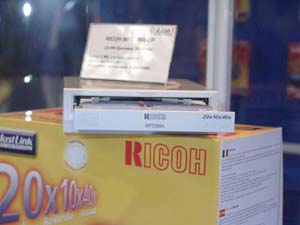
LaCie company has introduced its new model - the 8x4x32x LaCie PocketCD-RW. The device is so small that it perfectly fits your palm. The drive supports two interfaces - USB 1.1 and FireWire. When connected to a computer, the LaCie PocketCD-RW automatically defines the connection way and configures the system in a hot mode so that you can start working with the recorder right away. I don't know when the device is due to appear, but its price will reportedly be $399.
Another famous company, Fantom Drives, has announced on April 17 a new FireWire 16/10/40 CD-RW drive. Like Logitec recorders, this drive is based on the TEAC's mechanic system. Apart from the drive, the Retail-package contains an interface cable of the IEEE-1394 standard, a blank CD-R disc, Roxio software for Mac and PC platforms (Toast and EasyCD Creator). For today its price is defined as $349 and the first lots will be intended only for Internet-shops.
In the middle of April Ritek and Philips settled their problems and decided that it would be better to partner. So, Ritek will restart (by authority of Philips) to produce CD-R media assigning a significant sum of money to the European giant. In is interesting if this reconciliation is connected with closing of the Philips's patent for CD-R this year? ;-)
On 28 April TDK Japan will start selling two new external CD-RW drives: the GCD1610FU with FireWire/USB 1.1 interface and the GCD888UJ with USB interface.
The GCD1610FU is in fact an internal 16x TDK's model enclosed in the external case with a FireWire/USB controller. The drive has 16/10/40 speeds in case of the FireWire and 8/8/6 in case of the USB. The buffer underrun error prevention technology is BURN-Proof. The case measures 164 X 258 X 51 mm and weighs 1.9 kg.
The GCD888UJ has 8/8/6 speeds and supports JustLink technology. The dimensions and weight of the model is the same as of the previous drive. The price is still unknown.
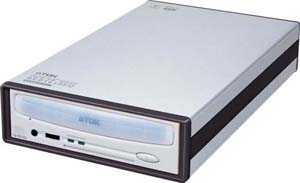
Along with announcing the new drives, TDK Corp, while complaining about a decrease of sales volumes in the USA and due to a growing Taiwanese and Thai competitors, stopped production of video and audio cassettes, diskettes and CDs on two factories in Georgia and California. The factories will soon be closed and 330 people discharged. The main media production facilities are now concentrated in Taiwan and Thailand. According to the representative, their output is enough to satisfy the demand. The media will be produced mainly in Germany and Thailand. The remaining 220 workers will be sent to the distribution centers on the USA territory.
And now again LaCie... In the end of the month the company has announced to start production of 24/10/40 CD-RW drives. The device has a 2 MBytes buffer and a 150 ms access time. In the press-release they said: "...When quality 16x CD-R media is used, it will be checked by the drive and burned at 24x, when possible. If media is not 24x-capable, the drive will automatically downshift to 16X. All LaCie-branded 16x media is 24x compatible...". It means that there is no need in an immediate production of 24X media. It is only necessary to make sure that the CD-R you are using is LaCie-branded. The only slippery issue is a lack of the final version of the specification even for 16x discs. Now the version of this document is considered 0.92.
In the end of the month another brand company, ASUS, announced the CRW-1210R model with 12/10/32 speeds and JustLink support. No other information concerning an access time, a buffer size or a price has been received.
But as a consolation prize ASUS is displaying its three new models - 12/10/32, 16/10/40 and 20/20/40. All of them are based on the Ricoh's pickup and use the JustLink technology.
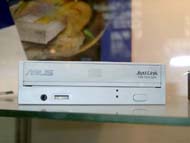
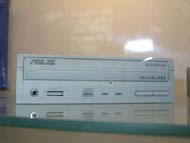
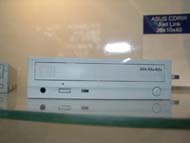
Sanyo announced its CRD-BP-1500P and CRD-BP5 drives with 24/10/40 speeds. Both use 24-X Zone CLV recording technology which lowers the load on a mechanic system, and the FlexSS-BP technology which automatically defines an optimal recording speed for each CD-R/CD-RW disc.
The 24X ZoneCLV is really pulling our leg - 24X speed is reached only on external tracks, the disc is rotating at the speed not higher than 8000 rpm, which corresponds to 16X speed. On the middle tracks the speed reached by the Sanyo drives is 20X. Here you can see a comparison of the new ZoneCLV drives with the CRD-BP1400P 16x drive:

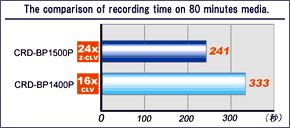
Such a speed benefit is peculiar not to all discs, however. That is why the FlexSS-BP was developed. Both new drives support the BURN-Proof technology.
Memorex company has announced that since 1 June 2001 they will increase the price of blank CD-R media due to a more severe control over the patent deductions. Another reason is a consolidation of CD-R media manufacturers all over the world. Since many small and middle-level firms had to abandon the market during 2000 selling their products sometimes even lower than the prime cost, discs became cheaper on the whole. Now the situation is getting more stable, and the products will be priced as before. The last several months showed that the patent owners didn't like to play with the manufacturers, and would make all of them pay their debts by any means. That is why I think that not only Memorex discs will get a raise in a price.
Let's draw a conclusion and make a small forecast:
|
Tweet | ||
A year ago Sony announced they were planning to develop a new CD-RW standard of twice higher density than the current discs. The project's name is "Double Density CD-ROM/-R/-RW ", their density is 1.3 GBytes. The project was developed for an almost painless migration from the old CD standard to a new one without changing a technological process of drive production. Philips was also invited to participate in it because of their rich developments and patents. In the shortest possible time DD CD specifications were developed on a base of the current CD format. In order to increase the density the following changes have been made: an information pit length was reduced, a track density was increased. Besides, a new error correction algorithm was used here, the CIRC7, and the ATIP address format was extended.
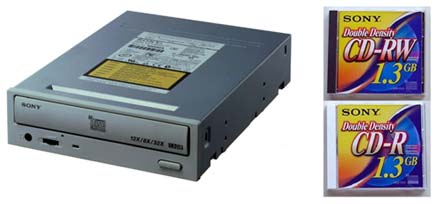
You may ask why this new standard was developed, if there is DVD? DVD devices are more expensive in production. The CD standard is not going to kick the bucket. Moreover, this year we will witness a real war in this field.
Sony and Philips' competitor in this sphere is TDK, which has introduced its own CD variant with a high density. TDK has also formed its alliance supported by Sanyo Semiconductor, Mitsubishi Chemical Corporation, Plextor. The TDK devices are based on the ML technology of Calimetrics. Let's look closer at this technology. Data on a standard CD are coded by the information pits as "1" and "0". It means that data are recorded in a flat from.
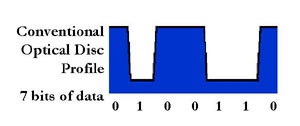
Calimetrics offers a recording technique when pits can have several values in the range of "0" to "7" depending on a depth.

A reflected laser ray creates different signals depending on a depth. The protocol used in a chipset allows distinguishing the signals and data processing the corresponding way. So, now a higher density can be recorded and a read/write speed can be increased. It's now not only the density that increases three times, but also a read speed. Special ECC algorithms were developed for correct data reading. All this is under control of the microcontroller developed by Calimetrics. Manufacturers have only to install this chip in a ready CD drive to make it compatible with the new standard. At the CEBIT TDK displayed a new prototype of a drive and discs.

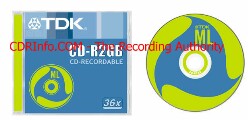
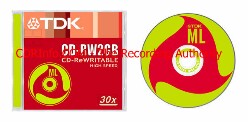
Let's compare both standards to find out what they can offer.
It is difficult to say now who will win, but it will be interesting to follow the situation.
The review is based on the materials from the following sites:
and from the sites of the following manufacturers:
Write a comment below. No registration needed!
|
Article navigation: |
| blog comments powered by Disqus |
| Most Popular Reviews | More RSS |
 |
Comparing old, cheap solutions from AMD with new, budget offerings from Intel.
February 1, 2013 · Processor Roundups |
 |
Inno3D GeForce GTX 670 iChill, Inno3D GeForce GTX 660 Ti Graphics Cards A couple of mid-range adapters with original cooling systems.
January 30, 2013 · Video cards: NVIDIA GPUs |
 |
Creative Sound Blaster X-Fi Surround 5.1 An external X-Fi solution in tests.
September 9, 2008 · Sound Cards |
 |
The first worthwhile Piledriver CPU.
September 11, 2012 · Processors: AMD |
 |
Consumed Power, Energy Consumption: Ivy Bridge vs. Sandy Bridge Trying out the new method.
September 18, 2012 · Processors: Intel |
| Latest Reviews | More RSS |
 |
Retested all graphics cards with the new drivers.
Oct 18, 2013 · 3Digests
|
 |
Added new benchmarks: BioShock Infinite and Metro: Last Light.
Sep 06, 2013 · 3Digests
|
 |
Added the test results of NVIDIA GeForce GTX 760 and AMD Radeon HD 7730.
Aug 05, 2013 · 3Digests
|
 |
Gainward GeForce GTX 650 Ti BOOST 2GB Golden Sample Graphics Card An excellent hybrid of GeForce GTX 650 Ti and GeForce GTX 660.
Jun 24, 2013 · Video cards: NVIDIA GPUs
|
 |
Added the test results of NVIDIA GeForce GTX 770/780.
Jun 03, 2013 · 3Digests
|
| Latest News | More RSS |
Platform · Video · Multimedia · Mobile · Other || About us & Privacy policy · Twitter · Facebook
Copyright © Byrds Research & Publishing, Ltd., 1997–2011. All rights reserved.